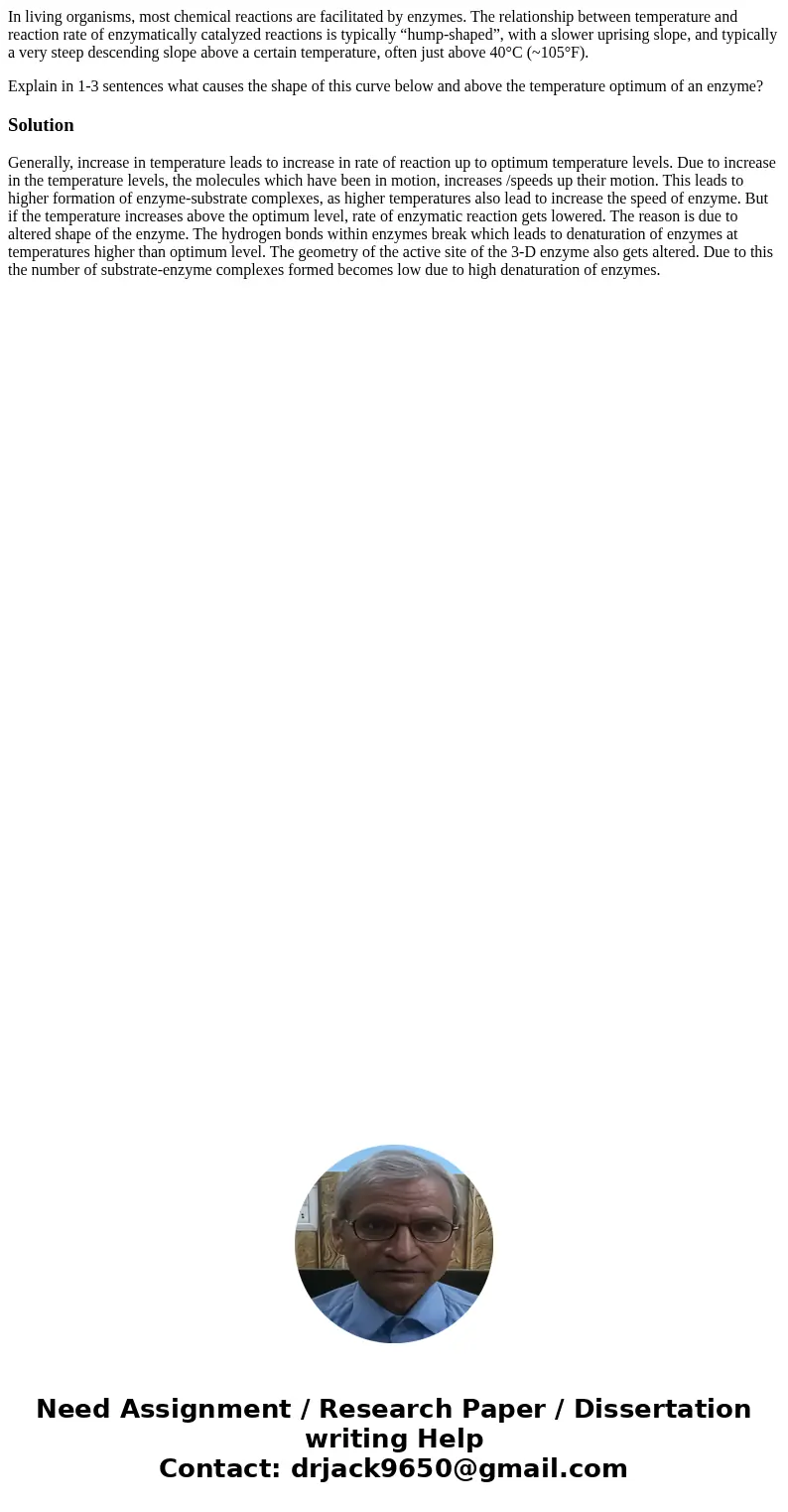In living organisms most chemical reactions are facilitated
In living organisms, most chemical reactions are facilitated by enzymes. The relationship between temperature and reaction rate of enzymatically catalyzed reactions is typically “hump-shaped”, with a slower uprising slope, and typically a very steep descending slope above a certain temperature, often just above 40°C (~105°F).
Explain in 1-3 sentences what causes the shape of this curve below and above the temperature optimum of an enzyme?
Solution
Generally, increase in temperature leads to increase in rate of reaction up to optimum temperature levels. Due to increase in the temperature levels, the molecules which have been in motion, increases /speeds up their motion. This leads to higher formation of enzyme-substrate complexes, as higher temperatures also lead to increase the speed of enzyme. But if the temperature increases above the optimum level, rate of enzymatic reaction gets lowered. The reason is due to altered shape of the enzyme. The hydrogen bonds within enzymes break which leads to denaturation of enzymes at temperatures higher than optimum level. The geometry of the active site of the 3-D enzyme also gets altered. Due to this the number of substrate-enzyme complexes formed becomes low due to high denaturation of enzymes.
 Homework Sourse
Homework Sourse